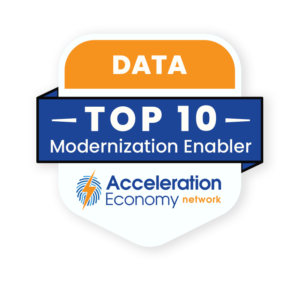
Just as it would be difficult to have a conversation where neither participant knew the other’s language, it’s hard to communicate in business without a shared understanding of the terms data and data governance. If we don’t agree on a common way to describe these vital concepts, we won’t be able to fully trust the information we receive. Business intelligence (BI), analytics, and reporting are valuable tools in any industry, but only if you have confidence that stakeholders have this common understanding — and that data is accurately represented.
Master Data Management, or MDM, is the process of creating, maintaining, and updating a centralized repository of critical data elements that are used across multiple business systems, providing a single source of truth across an organization. MDM improves precision and consistency, resulting in more efficient decision-making and increased operational performance. In this analysis, we’ll explore how MDM impacts manufacturing and healthcare and recommend ways to implement MDM across industries.
Improving Healthcare Data Flow
Improving outcomes is a driving factor for many healthcare organizations and practitioners. When a patient traverses through the healthcare system, many points of care can occur. At each step, timely access to accurate data is mission-critical. MDM helps ensure health data is consistent across the health organizations’ clinical applications and business applications.
The consistency and transparency of data from an MDM deployment make it easier to report patient outcomes and implement analytics. These benefits extend to finance and enterprise resource planning (ERP) as well. There, MDM assists in tying patient data back to finance or operations data for analytics or automation.
How FHIR Affects MDM
In the U.S., health organizations with a requirement to create, store, or share patient health information (PHI) must support the Fast Healthcare Interoperability Resources (FHIR) standard. This standard can assist in MDM and governance planning by providing a consistent schema of resources and attributes used in healthcare and health life science (HLS), accessible through the Representational State Transfer (REST) protocol.
A data engineer or chief data officer can use FHIR standards and accompanying documentation to get a sense of what data attributes might be required for healthcare organizations. A simple example: FHIR defines the healthcare provider (doctor, nurse, physician’s assistant, etc.) attribute as “practitioner.” Other electronic health records (EHRs) and business systems may use “physician” or “provider” for the attribute name. In this case, MDM helps us identify “practitioner” as a data attribute we need to account for and provides the required details in case we need to map the attributes.
Because healthcare organizations storing PHI in the U.S. must support FHIR, interoperability between systems and organizations is easy. Consider a retail health organization like CVS assisting pharmaceutical and research companies with procuring candidates for clinical trials. Both types of companies will most likely require access to PHI data stored by many different hospitals, clinics, and group practitioners. The data must be de-identified and secured while at rest and in transit. Data officers and engineers will require governance and MDM plans to deploy this solution securely and successfully.
AI, MDM, and Healthcare
Artificial intelligence (AI) and machine learning (ML) are becoming mission-critical in healthcare and HLS. AI can be used to triage and route patients, schedule encounters, translate provider notes, and more. New AI models provide fantastic opportunities for improving patient outcomes. When a healthcare organization has a solid MDM plan, backed by governance, the likelihood of successful AI implementation increases as both assist in helping to organize structured data.
Compliance and Regulatory Requirements
A great way to compel organizations to implement governance and MDM is through legislation that forces them to act. We’ve seen this with meaningful use and EHR implementations. This is also the case with FHIR, discussed earlier. By law, any health organization creating or storing health data must implement FHIR. The boom in remote patient care and remote patient monitoring during the pandemic hastened the implementation timeline for many groups.
In the U.S, if a health organization decides to share PHI, it must follow safe harbor laws. Safe harbor essentially defines PHI attributes that must be de-identified before data is shared with other providers or used in research. It is critical any that those who work on MDM and governance planning consider safe harbor and put processes in place to redact data where required.
Optimize Production and Supply Chain Management
Manufacturing and supply chain management use many different systems to make and move products. These systems often provide different types of information. Before you can begin to analyze the processes and look for needed improvements, it is important that everyone understands the information in the same way. This can be difficult because the information is often in different formats for different uses. MDM helps establish a common way of describing the information, so that it can be shared easily within the company and with outside partners.
An example of a manufacturing data point that might be called two different things, and cause difficulty in data analysis, is “production output.” This might be referred to as “units produced” in one system and “goods manufactured” in another. Without standardizing the terminology through MDM, it would be difficult to accurately analyze and compare production output data across different systems and departments, leading to confusion and potential errors in decision-making.
Cost Savings and Improved Return on Investment (ROI)
One of the most effective ways for a manufacturing company to increase profits is to cut costs while increasing output. This requires accurate forecasting of which products need to be produced to meet customer demand, and what raw materials will be needed to keep production going. It also requires minimizing waste — wasted materials, wasted time, and wasted effort. The careful management of manufacturing, warehousing, and shipping costs involves collaboration among different departments or companies analyzing data from multiple systems that use different ways to describe the same information. MDM helps ensure that this critical information doesn’t lose meaning in the process.
With accurate, up-to-date data on inventory levels, companies can better manage their stock levels, which can reduce the costs associated with overstocking or stockouts. A strong MDM framework helps provide a clear view of supplier data, so that manufacturers can better manage their supply chain, which can lead to cost savings through improved supplier relationships and reduced lead times. And with accurate, up-to-date data on production schedules, manufacturers can better manage their resources and reduce downtime, which can lead to cost savings through improved efficiency.
Go Deeper
We hope this analysis has provided a clear understanding of the critical role of MDM in data governance. If you are interested in learning more about how to implement MDM in your organization, we recommend checking out industry resources such as the Data Management Association (DAMA) or the International Association of Information Technology Professionals (IAITP). Additionally, consulting with a specialized MDM vendor or solution provider can help you to develop a strategy that is tailored to your organization’s specific needs.
Paul Swider, founding CEO of healthcare tech startup RealActivity and Acceleration Economy analyst, also contributed to this analysis.
Which companies are the most important vendors in data modernization? Click here to see the Acceleration Economy Top 10 Data Modernization Short List, as selected by our expert team of practitioner analysts.
Want more insights into all things data? Visit the Data Modernization channel:











